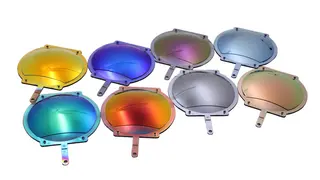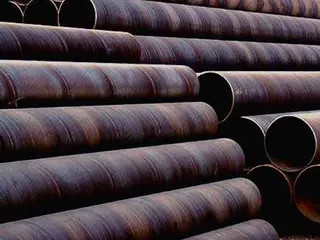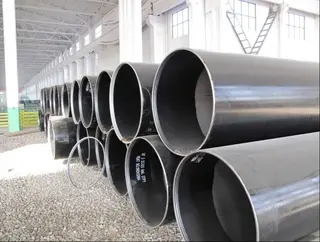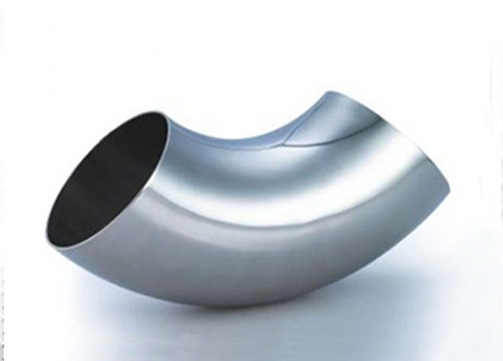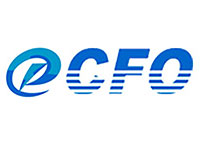Advantages of Fiber Optic Transmission
Fiber optic transmission has the following advantages:
1. Large bandwidth
The range of bandwidth determines transmission capacity. The higher the carrier frequency is, the larger the bandwidth of signal transmission will be. As for VHF band, carrier frequency ranges from 48.5MHz to 300MHz, with bandwidth of about 250MHz, supporting transmission for 27 sets of TV channels and dozens of FM broadcasting programs. The frequency of visible light can reach up to 100,000GHz, which is over a million times the frequencies of VHF band. Optical fibers have different losses due to different frequencies of light, which can affect bandwidth. But even in the lowest loss section, bandwidth can reach up to 30,000GHz. Currently, bandwidth of singe light source takes up a small part. Multi-mode fiber has about several hundred megahertz of bandwidth and even quality single-mode fiber can reach over 10 GHz of bandwidth. Sophisticated coherent optical communication technology can be used to arrange 2000 optical carriers within the range of 30,000GHz, supporting millions of channels through wavelength division multiplexing (WDM).
2. Low loss
As for the system composed of coaxial cables, even highest quality cables will generate over 40dB of optical loss per kilometer during transmission of 800MHz signals. In contrast, optical fibers will generate no more than 0.35dB per kilometer during transmission of 1.31μm light and even no more than 0.2dB during transmission of 1.55μm light, far lower than the loss of foresaid coaxial cables and hence supporting far longer distance transmission. In addition, fiber optic transmission loss has the following features: (1) same optical loss is generated in all cable TV channels, not requiring equalizer as trunk cables; (2) optical loss is nearly not changed with temperature, without having to worry about electrical level fluctuation of trunk lines due to temperature change.
3. Light weight
Optical fibers are very tiny. Single mode fiber usually has a core diameter of 4μm ~10μ and an outer diameter of 125μm. A fiber optic cable composed of 4~48 optical fibers, even if diameters of waterproof layer, strengthening rib and protective jacket and others are included, is no less than 13mm in diameter, which is far smaller than standard coaxial cables. Furthermore, optical fibers are made from glass fibers. Therefore, they are characterized by small diameter, light weight and easy installation.
4. Good anti-interference ability
Because optical fibers are basically composed of quartz which only transmits light and does not conduct electricity. Thus, the transmission of optical signals in optical fibers is not affected by electromagnetic field. So fiber optic transmission has good resistance to electromagnetic interference and industrial frequency interference. Because of this, transmitted signals in optical fibers are not easily tapped and hence are good for confidentiality.
5. High fidelity
Because fiber optic transmission usually doesn’t require relay amplifiers, new types of nonlinear distortion will not occur. As long as lasers have good linearity, high fidelity of television signals can be ensured during transmission. Experiments show that Carrier to Composite Triple Beat ratio (C/CTB) of optical fiber amplitude modulation system is over 70dB and cross-modulation index (CM) is over 60dB, far higher than nonlinear distortion index of normal cable trunk line system.
6. Reliable working performance
It is well known that reliability of a system is related to the number of devices in the system. The more devices there are, the more likely system goes wrong. While there are a few devices in optical fiber system, unlike cable system that requires dozens of amplifiers. Thus, optical fiber system has high reliability. Moreover, optical fiber devices usually have long service life. So, fault free working time can reach up to 500,000 to 750,000 hours. Among all optical fiber devices, lasers of optical transmitters have the shortest service life, but can still reach over 100,000 hours. Hence, well-designed and correctly-installed optical fiber system has very high reliability.
7. Decreasing cost
Currently, New Moore 's Law, namely Optical Law, was put forward. The Optical Law indicates that bandwidth for information transmission in optical fibers can double the previous bandwidth and related cost will decrease by one times every six months. The development of optical communication technology lays a good foundation for Internet broadband technology. In addition, quartz, as the basic component of optical fibers, is abundant. With the development of technologies, the related cost will be further reduced, while coppers, as the raw material of electric cables, will become more expensive. Clearly, in the future, optical fibers will be dominant in the market and will be used as the main transmission way for cable television network.
1. Large bandwidth
The range of bandwidth determines transmission capacity. The higher the carrier frequency is, the larger the bandwidth of signal transmission will be. As for VHF band, carrier frequency ranges from 48.5MHz to 300MHz, with bandwidth of about 250MHz, supporting transmission for 27 sets of TV channels and dozens of FM broadcasting programs. The frequency of visible light can reach up to 100,000GHz, which is over a million times the frequencies of VHF band. Optical fibers have different losses due to different frequencies of light, which can affect bandwidth. But even in the lowest loss section, bandwidth can reach up to 30,000GHz. Currently, bandwidth of singe light source takes up a small part. Multi-mode fiber has about several hundred megahertz of bandwidth and even quality single-mode fiber can reach over 10 GHz of bandwidth. Sophisticated coherent optical communication technology can be used to arrange 2000 optical carriers within the range of 30,000GHz, supporting millions of channels through wavelength division multiplexing (WDM).
2. Low loss
As for the system composed of coaxial cables, even highest quality cables will generate over 40dB of optical loss per kilometer during transmission of 800MHz signals. In contrast, optical fibers will generate no more than 0.35dB per kilometer during transmission of 1.31μm light and even no more than 0.2dB during transmission of 1.55μm light, far lower than the loss of foresaid coaxial cables and hence supporting far longer distance transmission. In addition, fiber optic transmission loss has the following features: (1) same optical loss is generated in all cable TV channels, not requiring equalizer as trunk cables; (2) optical loss is nearly not changed with temperature, without having to worry about electrical level fluctuation of trunk lines due to temperature change.
3. Light weight
Optical fibers are very tiny. Single mode fiber usually has a core diameter of 4μm ~10μ and an outer diameter of 125μm. A fiber optic cable composed of 4~48 optical fibers, even if diameters of waterproof layer, strengthening rib and protective jacket and others are included, is no less than 13mm in diameter, which is far smaller than standard coaxial cables. Furthermore, optical fibers are made from glass fibers. Therefore, they are characterized by small diameter, light weight and easy installation.
4. Good anti-interference ability
Because optical fibers are basically composed of quartz which only transmits light and does not conduct electricity. Thus, the transmission of optical signals in optical fibers is not affected by electromagnetic field. So fiber optic transmission has good resistance to electromagnetic interference and industrial frequency interference. Because of this, transmitted signals in optical fibers are not easily tapped and hence are good for confidentiality.
5. High fidelity
Because fiber optic transmission usually doesn’t require relay amplifiers, new types of nonlinear distortion will not occur. As long as lasers have good linearity, high fidelity of television signals can be ensured during transmission. Experiments show that Carrier to Composite Triple Beat ratio (C/CTB) of optical fiber amplitude modulation system is over 70dB and cross-modulation index (CM) is over 60dB, far higher than nonlinear distortion index of normal cable trunk line system.
6. Reliable working performance
It is well known that reliability of a system is related to the number of devices in the system. The more devices there are, the more likely system goes wrong. While there are a few devices in optical fiber system, unlike cable system that requires dozens of amplifiers. Thus, optical fiber system has high reliability. Moreover, optical fiber devices usually have long service life. So, fault free working time can reach up to 500,000 to 750,000 hours. Among all optical fiber devices, lasers of optical transmitters have the shortest service life, but can still reach over 100,000 hours. Hence, well-designed and correctly-installed optical fiber system has very high reliability.
7. Decreasing cost
Currently, New Moore 's Law, namely Optical Law, was put forward. The Optical Law indicates that bandwidth for information transmission in optical fibers can double the previous bandwidth and related cost will decrease by one times every six months. The development of optical communication technology lays a good foundation for Internet broadband technology. In addition, quartz, as the basic component of optical fibers, is abundant. With the development of technologies, the related cost will be further reduced, while coppers, as the raw material of electric cables, will become more expensive. Clearly, in the future, optical fibers will be dominant in the market and will be used as the main transmission way for cable television network.

Send your message to this supplier
Related Articles from the Supplier
Advantages of Fiber Optic Transmission
- Jul 15, 2015
Advantages of Fiber Optic Communication
- Oct 14, 2015
Advantages of Fiber Optic Mechanical Splice
- Nov 04, 2015
Advantages of MTP/ MPO Connectors
- Dec 22, 2015
Introduction of Fiber Optic Patch Cord
- Sep 23, 2015
Internationalization of Fiber Optic Industry
- Jul 09, 2015
Splice Loss of Fiber Optic Connectors
- May 25, 2015
Features of Fiber Optic Patch Panels
- Feb 17, 2016
Related Articles from China Manufacturers
Advantages of spiral welded pipe
- Sep 12, 2023
Advantages of Welded Flanges
- May 06, 2021
Advantages of straight seam steel pipe
- Nov 07, 2023
Advantages of Stamping Elbow
- Jul 31, 2020
Advantages of Stamping Elbow
- Jul 19, 2022
Advantages & Disadvantages of Ball Valves
- Jun 02, 2020
Advantages and Disadvantages of O-rings
- Dec 29, 2021
Related Products Mentioned in the Article
Nokoxin Technology Co., Ltd.
- Address: 3F, Building No.2, Jiayiyuan Technical Park, Huaning Road, Dalang, Longhua District, Shenzhen, China.
- Phone: +86 0755-61562392
- Business Type: Manufacturer, Trading,
Supplier Website
Source: http://www.carefiber.com/advantages-of-fiber-optic-transmission.html









